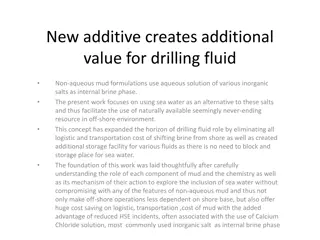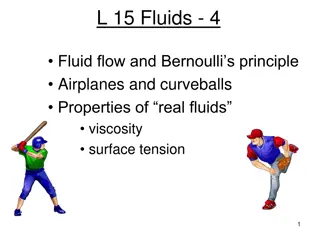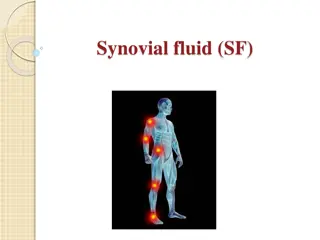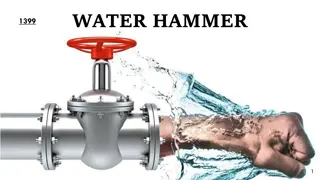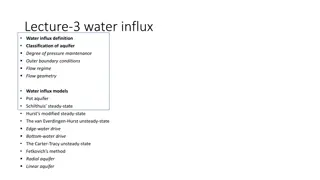Understanding Water Hammer Phenomenon in Fluid Systems
Water hammer is a significant issue caused by sudden changes in fluid velocity, commonly encountered in hydraulic systems when valves are closed rapidly. This phenomenon, also known as hydraulic shock, can have serious consequences if not managed properly. The content discusses the time of pressure wave travel, celerity, and calculations related to water hammer in both rigid and elastic pipes. It sheds light on the importance of considering the elastic properties of pipes and the impact of instantaneous valve closures on pressure changes due to water hammer.
Download Presentation

Please find below an Image/Link to download the presentation.
The content on the website is provided AS IS for your information and personal use only. It may not be sold, licensed, or shared on other websites without obtaining consent from the author. Download presentation by click this link. If you encounter any issues during the download, it is possible that the publisher has removed the file from their server.
E N D
Presentation Transcript
ASSIGMENTS Problem 1 Given : Trapezoidal earth channel B = 2m, sideslope = 1V:2H, n=0.02, S = 0.003m/m, normal depth y = 0.5m . 1 0.5m m 2 2 m page51 Find : Velocity V and discharge Q Problem 2 Given : A concrete trapezoidal channel B = 1.5m, sideslope = 1V:2H, n=0.013, slope = 0.002, Q = 3 m3/s 1 2 1.5m mm m page53 Find : Depth y and velocity v Problem 3 Given: A compound channel as illustrated, with an n value of 0.03 and a longitudinal slope of 0.002m/m
Subsection B Subsection A 1m 2m 1 1 30m 20m Page57 Find: Discharge Q Problem 4 Given : Determine the critical depth in a trapezoidal shaped swale with z = 1, given a discharge of 9.2m3/s and bottom Width = 6m. Also, determine the critical velocity. 1 z 6 m page76 Find : Critical depth and Velocity at critical depth
2 L r WATER HAMMER Water hammer is the term used to express the resulting shock caused by the sudden decrease in the motion (velocity) of a fluid. Simply put if the velocity of a liquid in a pipeline is abruptly decreased by a valve movement the phenomenon encountered is called WATER HAMMER. It is a very important problem in the case of hydroelectric plants where the flow of water must be rapidly varied in proportion to the load changes on turbine. Water hammer occurs in liquid flow pressure systems whenever a valve is closed. Note: The terminology water hammer may be misleading since the phenomenon can occur in any liquid. In a pipeline the time of travel of the pressure wave up and back (round trip) is given by: = T C p time of roundtrip in seconds L=Length of pipe in meter = rT C = p gE E = = 2 v v /m C kN = 7 E . 2 v o 6 2 10 x / kN m Celerity of pressure wave in (m/s) FOR RIGID PIPES (Non-Elastic): The velocity of pressure wave (sound wave) is commonly referred to as ACOUSTIC VELOCITY. Volume modulus of the medium. For water a typical value is , thus the velocity of pressure wave in water is C=1440m/s.
is replaced by K such that v E E = v K D E ELASTIC PIPES: But for water in an elastic pipe this value is modified by the stretching of the pipe walls. + v 1 t E 1 gK = = C C p DE + v 1 tE D= diameter of the pipe t=thickness of the pipe E=the modulus of elasticity of the pipe material. = V d P C dV p V = p = Therefore the velocity of a pressure wave in an elastic pipe is; p , C V p h For normal pipe dimensions the velocity of a pressure wave in a water pipe usually ranges between 600 and 1200m/s but it will always be less than 1440m/s. The increase in pressure caused by the sudden closing of a valve is calculated by; Change in pressure = density x celerity x change in velocity. INSTANTANEOUS CLOSURE: In case of instantaneous and complete closure of a valve, the velocity is reduced from V to zero, i.e. then represents the increase in pressure due to valve closure, The water hammer pressure












